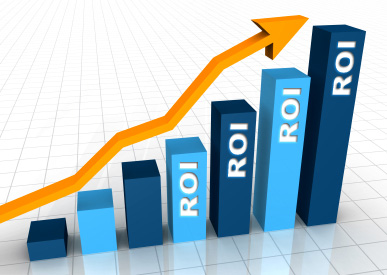Following the massive technological growth in all areas of life, healthcare tech has been improving as fast if not even faster. Wearable devices are at least on 1 of 10 americans daily, which means there are a lot more opportunities lie before us. One of them is RPM – remote patient monitoring – a variety of advanced technology approaches that allow to monitor patient conditions without a face-to-face visit.
In this post we decided to look at RPM from the point if return of investment (ROI) as any new idea has to bring profit (and preferably not only financial).
As we all know, ROI — return on investment — represents the ratio of the net gains relative to the initial investment over a certain period of time.
Here are some ROI calculations from the points of view of the stakeholders involved in the process of RPM. Bear in mind that calculations in each given situation will depend on a number of factors including the care delivery model, the payment/reimbursement model, the technology, and of course costs.
As we know, ROI can be expressed in the following equation:
ROI = net gains / investment.
ROI to Patients and/or their Families.
ROI to Patient or Family = Net Gains of Patient and Family ⁄ Investment of Patient and Family.
For private pay patients and their families the financial benefits of home telehealth and RPM are in prolonging independence by preventing health impairment which could lead to disabilities. It is also in avoiding moving into assisted living or skilled nursing facilities, which is very important to sustain a normal life. It’s beyond doubt that some seniors consider having to live in a specialized facility as the end of their life as individuals and feel as if they were a burden to society. RPM systems allow to avoid that for much longer without risks to the health.
As to the financial benefits, those could also include savings in co-pays for continual visits to the hospital. The investment in this case are the monthly cost of private home telehealth services. Also it’s any co-pay for the occasional physician office visit, lab tests, and prescriptions – but we should not forget that these costs are inevitable in any case, when we care of ourselves and our dear ones.
ROI to Care Provider
ROI to care providers can be calculated as:
ROI Care Provider = Net Gains Care Provider ⁄ Investment.
When we speak about financial benefits for the care provider (the one, who invests in information and communications technology infrastructure, the RPM technology itself, as well as the clinical and care services), those will include: lower costs in providing staff efficiencies, travel costs for the staff, and higher payment from the payer as incentive for avoiding more expensive procedures or penalties. There is also the benefit of no overcrowded facilities, especially when it comes to patients with chronic diseases.
As we can see, when it comes to the care provider it is easier to make accurate ROI calculations as all benefits are cost-tied, as opposed to many personal benefits in case of a patients and their families.
Thanks to The Center for Technology and Aging and the Center for Connected Health now it is much easier to calculate ROI for a RPM program for the management of chronic conditions, like Congestive Heart Failure (CHF) as they created an online tool. It was funded by the California Healthcare Foundation.
The online ROI calculator will ask you to enter data in 5 areas:
1. Patient Enrollment: here you will need to specify the size of patient enrollment in the RPM program in year 1 and presume what enrollment will be in year 5.
2. Technology: in this area you need to assess your investments in health IT. These estimates include instant investments in medical devices and infrastructure; if applicable, an amortization period for purchases/expenditures can be specified. The tool also asks for recurring costs like hardware rental, data costs and server hosting.
3. Staffing: here you need to enter staffing requirements for the RPM program, including fixed management costs, clinical and support staff costs that will change with the number of patients enrolled.
4. Other Costs: Users can enter other RPM-related costs, including costs for services, subscriptions, travel, administration, patient materials and external monitoring services.
5. Outcomes: The final step will help you to estimate your potential savings from the RPM program. The tool bases its calculation of savings on whether patients change their health care utilization as a result of the program. One of the advantages of the tool is that it allows users to identify the stakeholder that will bear the financial risks or enjoy the financial gains when service utilization changes. It is important to precede any anticipated increase in utilization (home visits, for example) with a minus (-) sign to have the correct results, as the calculator assumes savings, i.e. decrease in utilization.
Once users answer the ROI Calculator’s 5 questions, the tool provides 4 reports:
1. A Cost Summary gives users a quick overview of the RPM program’s total cost by year and total cost per patient per year.
2. A Savings Summary charts the potential cost savings to the stakeholders identified in question 5.
3. An ROI Evaluation compares the RPM program’s financial gains to its financial costs. Te tool provides a score indicating the extent to which the RPM intervention will generate enough savings to cover the cost of the program.
4. A Sensitivity Analysis allows users to see how the ROI at year 5 would change if pa-
tient enrollment and costs changed.
As you can see, the implementation of RPM holds benefits for each stakeholder and some healthcare institutions already make adjustments to their systems to provide better care for seniors and individuals with chronic diseases.
